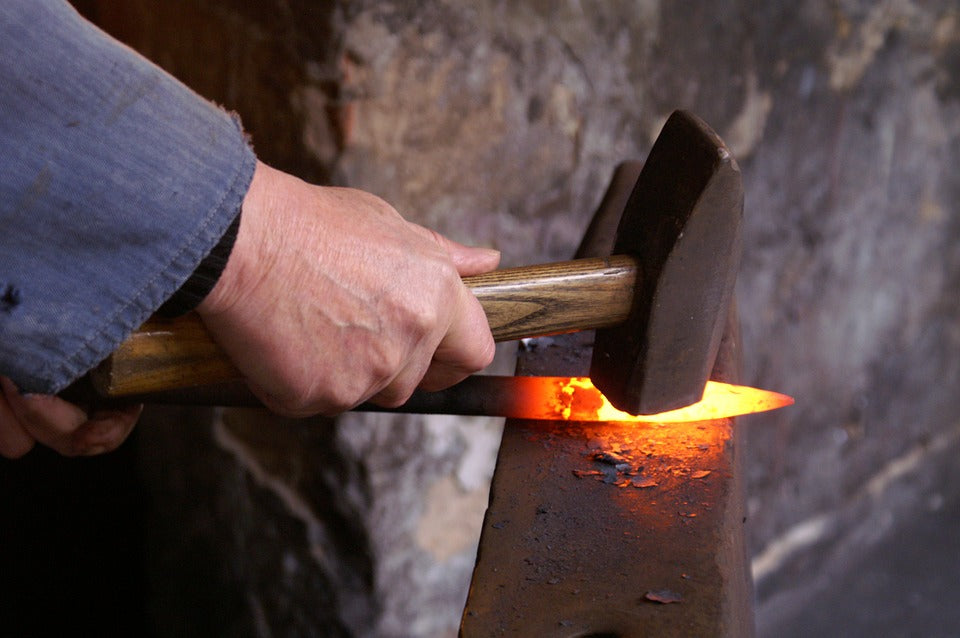Tu carrito está vacío


Not all swords are made using a single type of metal. In fact, most are made of two or more metals. When multiple metals are used -- either to produce swords, knives or other items -- the non-primary metals are called "alloys." So, what are some of the most common alloy metals used in bladesmithing and how do they affect the final product?
Chromium
Chromium is a shiny, hard metal that's resistant to tarnishing and has a high melting point. It receives it namesake from its brilliant chrome appearance.
When used in bladesmithing as an alloy, chrome increases the blade's tensile strength, hardness, toughness and resistance to corrosion. When more than 12% chromium is used as an alloy, the blade is said to be "stainless," due to its metal's exceptional rust-resistant properties.
Carbon
Another metal that's commonly used as an alloy in bladesmithing is carbon. Being the 15 most abundant element on Earth, carbon is readily available and easy to acquire. In fact, it's the fourth most abundant element in the universe, only behind hydrogen, helium and oxygen, respectively.
Swordsmiths often use carbon as an alloy metal to improve the quality of their blades. It's known to increase the blade's tensile strength, hardness, resistance to wear, and ability to hold an edge. The downside to using chromium alloy, however, is that it reduces ductility. The more chromium used, the less ductile the blade becomes.
Nickel
Nickel is a silvery-white metal that's both hard and ductile. Because of this characteristic, it's considered to be a "transition" metal.
Nickel isn't particularly popular as an alloy metal in bladesmithing, though some swordsmiths still use it nonetheless. When added as an alloy, nickel increases the blade's toughness and resistance to corrosion. However, it also reduces the blade's hardness while also preventing hardening through differential heat treatment.
Cobalt
Some swords are made using cobalt as an alloy. Featuring the atomic symbol Co and the number 27, cobalt is found in chemical form but is smelted to produce a hard metal.
Cobalt offers several benefits when used as an alloy in bladesmithing. Among other things, it increases blade strength, hardness, and resistance to heat and corrosion. Furthermore, cobalt allows for quenching at higher temperatures. This makes it particularly useful for creating swords that require differential heat treatment, such as the Japanese katana.
These are just a few of the many alloy metals that are used in bladesmithing. Others may include copper, tungsten, silicon and nitrogen.